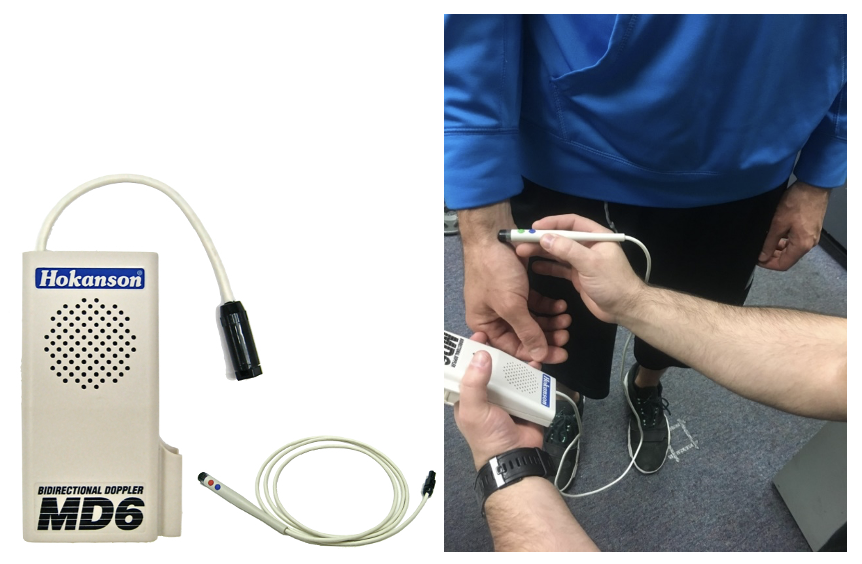The purpose of blood flow restriction is to partially reduce blood flow into the muscle and largely prevent blood flow from leaving the muscle. This is accomplished through the application of a cuff to the limb. Early work applied the same pressure to each individual but more recent recommendations suggest making the pressure relative to the cuff being used and the individual to which the cuff is being applied. For example, the width of the cuff used and the size of the limb to which the cuff is applied are two factors that have a major impact on the pressure required to reduce blood flow. Wider cuffs require lower pressures and larger limbs require greater pressures. The lower absolute pressure applied with a wider cuff does not necessarily make it safer than a narrow cuff, it is simply reflective of how cuffs of differing widths interact with the limb they are applied to. The pressure applied needs to be made relative to both of these factors (Figure 1) and this can be done by taking a single measurement. This is often called the arterial occlusion pressure or limb occlusion pressure.
Figure 1. Two factors that have large effects on the pressure needed include cuff width and limb size (circumference).

The arterial occlusion pressure is defined as the lowest pressure at which there is no blood flow. This is assessed by taking the cuff that will be used during exercise and applying it to the limb of interest. The two common places for cuff application (Figure 2) include the top of the arm (covering a portion of the bicep) or the top of the leg (covering a portion of the quadriceps). This is recommended even if performing exercise with the lower leg and/or a muscle that is proximal to the cuff.
Figure 2. Cuff placement locations for the upper body and lower body.

The cuff bladder should ideally cover the artery when the cuff is applied. This is less of an issue in the upper body but could become more of one in the lower body when limb circumferences start to become quite large (> 60 cm). Once the cuff is placed on the limb, something that can detect a pulse is used distal to the cuff to estimate when blood flow stops. A hand-held Doppler probe is one of the more common pieces of equipment used for this purpose (Figure 3).
Figure 3. One option for taking the pulse for the arterial occlusion pressure measurement is a hand-held Doppler probe.

The cuff is then inflated and slowly increased to the point at which there is no blood flow. The lowest pressure at which there is no flow would be defined as the arterial occlusion pressure and a percentage of this would be used during the exercise. This ensures that arterial blood flow is always going into the muscle (albeit reduced from free flow). Relative pressures between 40% and 80% of resting arterial occlusion pressure are commonly recommended in the literature.

